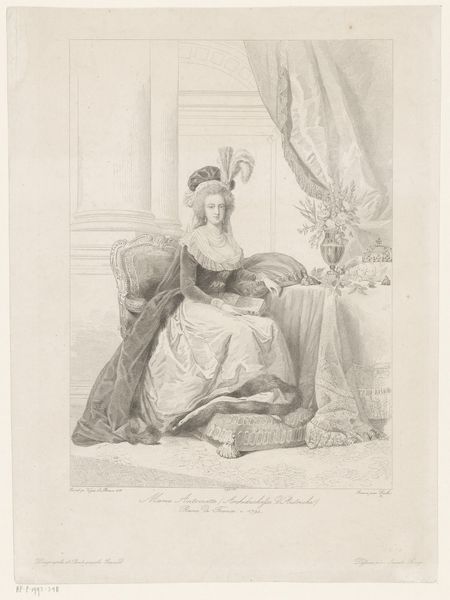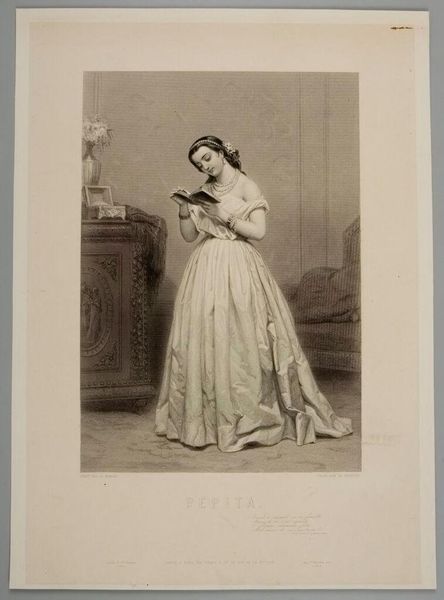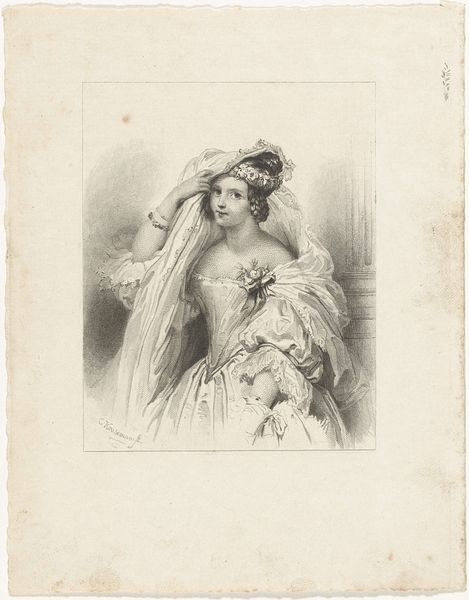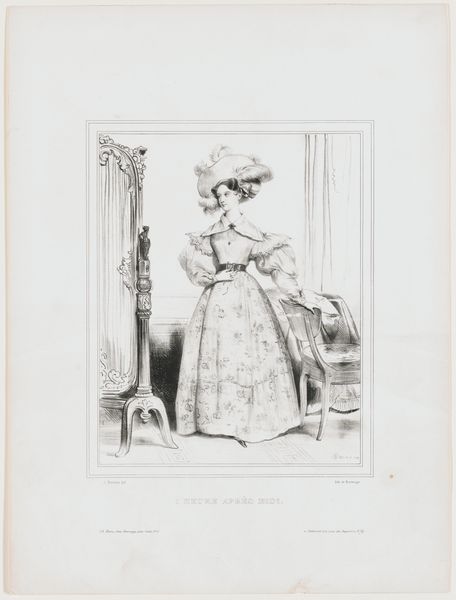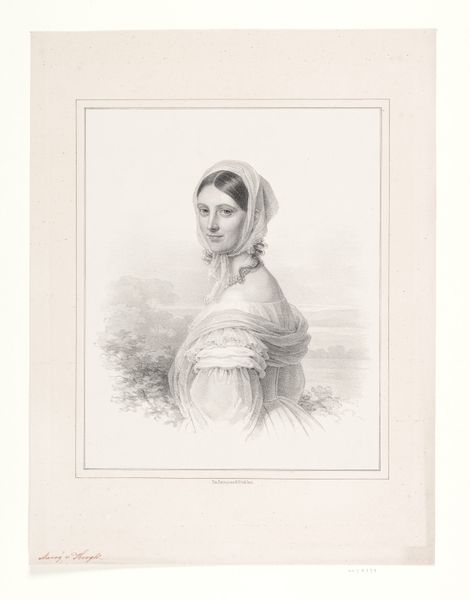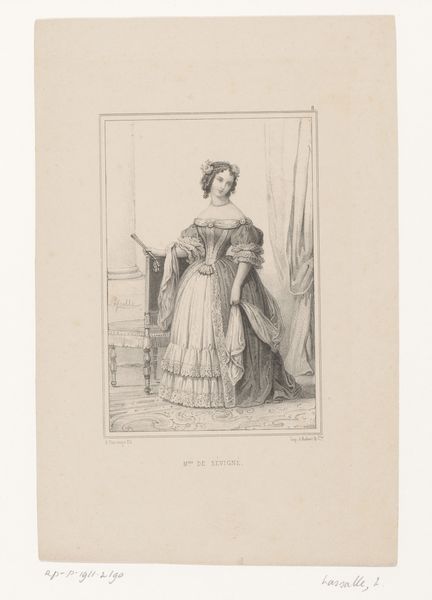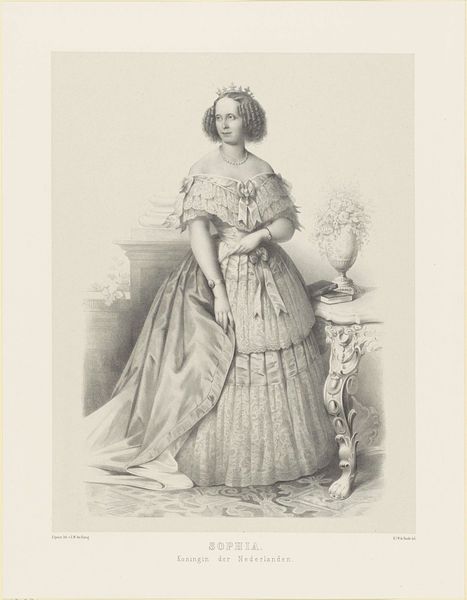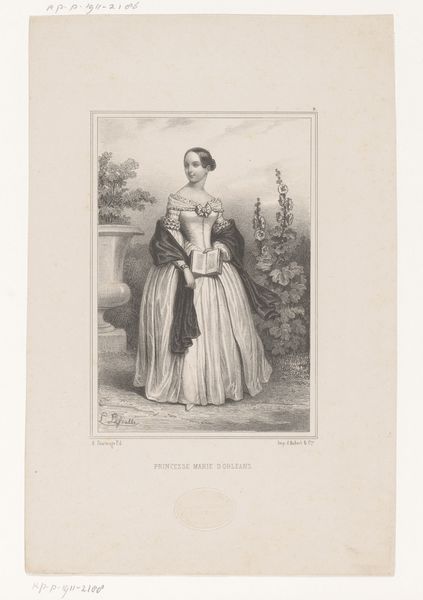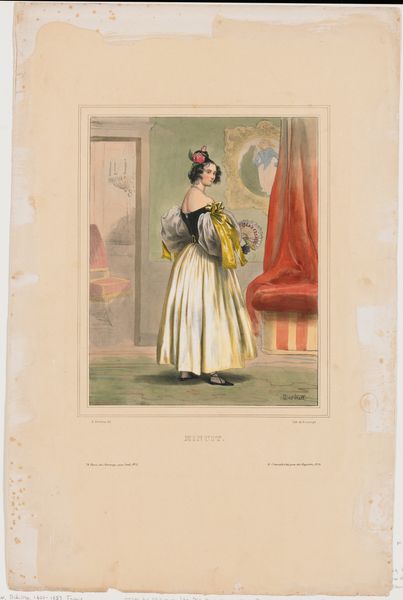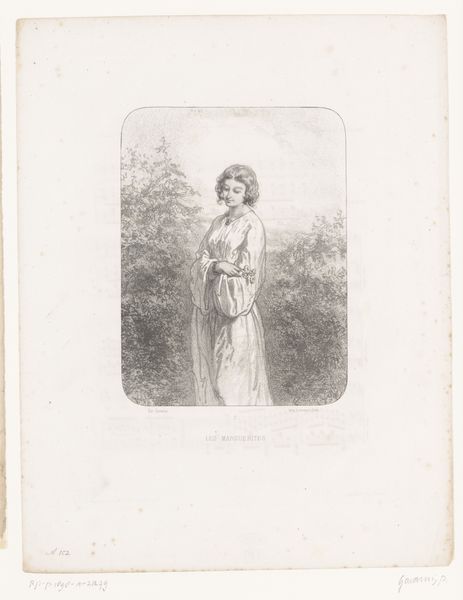
drawing, print, engraving
#
portrait
#
drawing
#
neoclacissism
# print
#
engraving
Dimensions: Sheet (trimmed within plate): 8 13/16 × 6 7/8 in. (22.4 × 17.4 cm)
Copyright: Public Domain
Mrs. Jackson was made around 1784 by John Condé, using a printmaking technique called stipple engraving. Condé likely began by coating a copper plate with wax, and then used a tool with a textured tip to create tiny dots on the surface. When printed, these dots produce an image with a soft, textured appearance, quite different from the sharp lines of traditional engraving. Notice how this technique is particularly effective at rendering delicate fabrics like her dress. Stipple engraving emerged in the 18th century as a way to mimic the tonal gradations of chalk drawings. But beyond just appearances, its popularity was also tied to wider social issues. It was faster to execute than other forms of engraving, enabling the mass production of prints for a growing consumer market. The process represents the beginnings of a shift towards industrialized image-making, a move away from craft towards commercial production. Recognizing the techniques used to create an artwork, and their historical context, is essential to understanding its meaning.
Comments
No comments
Be the first to comment and join the conversation on the ultimate creative platform.
